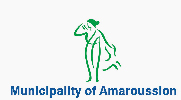Here is a small list of Archaeological Sites, Monuments, Museums and Galleries are only some of the places of interest worth visiting in Athens. You can also navigate in their websites by clicking on the titles…
THE ACROPOLIS MUSEUM
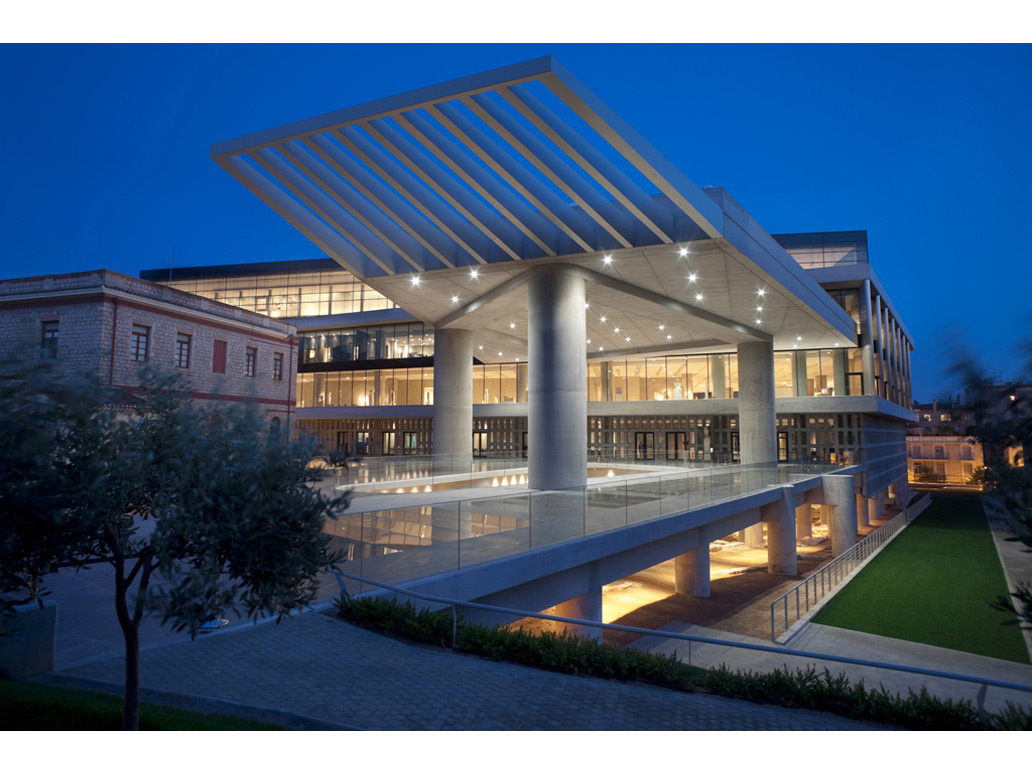
The monuments of the Acropolis have withstood the ravages of past centuries, both of ancient times and those of the Middle Ages. The new Acropolis Museum has a total area of 25,000 square meters, with exhibition space of over 14,000 square meters, ten times more than that of the old museum on the Hill of the Acropolis. The new Museum offers all the amenities expected in an international museum of the 21st century.
Address: Acropolis Museum, 15 Dionysiou Areopagitou St.
NATIONAL ARCHAEOLOGICAL MUSEUM
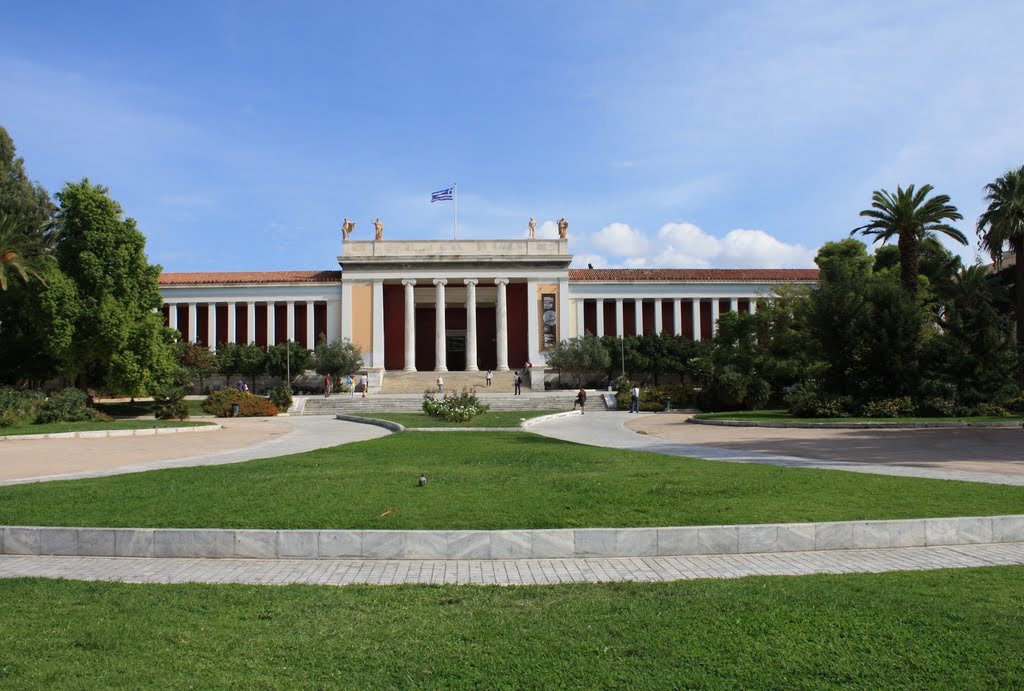
One of the world’s finest and largest collections of ancient Greek art with exhibits of pottery, statues, frescoes and household items. A collection of sculptured grave monuments of the 5th and 4th Centuries B.C., dedicatory reliefs of the 5th and 4th Centuries B.C. from Piraeus, are some of the museums exhibits.
The National Archaeological Museum of Athens was founded in 1889. In the museum there are findings from all the places of ancient Greece and the Greek world, the exhibits include, statues, vases, jewellery, sculpture, weapons, religious items from the Neolithic times, early Cycladic civilization, the Minoan civilization, the classical and Hellenistic period and the roman period. There are also a huge collection of vases from the geometric period, a collection of frescoes and other items from the findings in Santorini (Thira) and a huge library.
The National Archaeological Museum of Athens was founded in 1889. In the museum there are findings from all the places of ancient Greece and the Greek world, the exhibits include, statues, vases, jewellery, sculpture, weapons, religious items from the Neolithic times, early Cycladic civilization, the Minoan civilization, the classical and Hellenistic period and the roman period. There are also a huge collection of vases from the geometric period, a collection of frescoes and other items from the findings in Santorini (Thira) and a huge library.
Address: 44 Patission St.
BENAKI MUSEUM
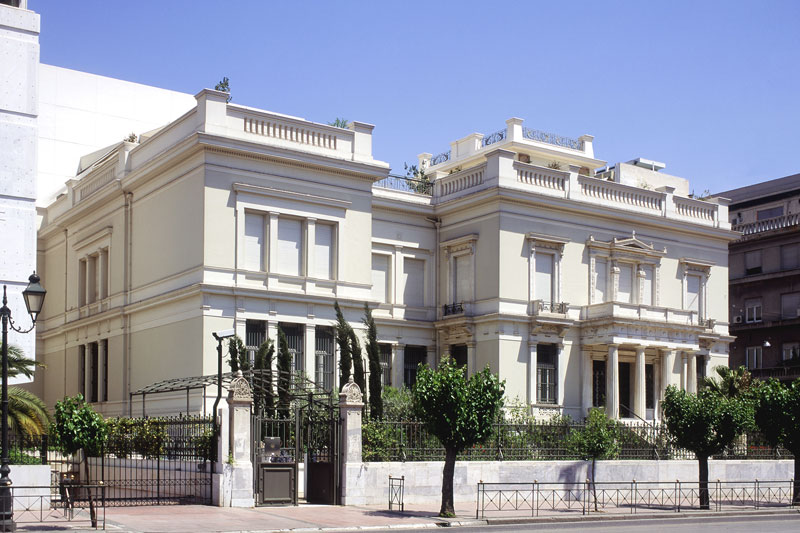
The museum was founded by Antonis Benakis, a Greek expatriate from Alexandria. The museum has many donations from various Greek collectors. Among its exhibits are various works of art and paintings, rare manuscripts and books, byzantine icons, items and archaeological findings from all the historic periods of Greece. Benaki Museum hosts various temporary exhibitions throughout the year.
Main Building: 1 Koumbari St. & Vas. Sofias Ave.
Pireos Street Annex: 138 Pireos Street
THE NUMISMATIC MUSEUM
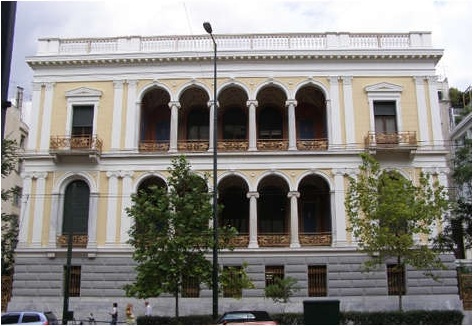
The Numismatic Museum is one of the oldest public museums in Greece. It was established in 1834, the same year as the National Archaeological Museum. It is one of the five most important numismatic museums in the world. It displays more than 600,000 coins, “treasures” (closed coin collections), standard weights, metals and precious stones, from the ancient Greek period, the Roman period, Byzantium, the western Middle Ages, and modernity.
Address: Iliou Melathron, Eleftheriou Venizelou Ave. (Panepistimiou, close to Syntagma square)
BYZANTINE MUSEUM
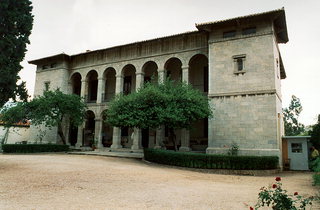
The most important collection of icons and Byzantine art in Greece, housed in the Florentine-style villa. Walk through a reproduction of a cruciform church into a post-Byzantine church, which has an ornate wooden iconostasis (screen used to house icons and to divide the sanctuary from the rest of the church).
Address: 22 Vassilissis Sophias Avenue
MUSEUM OF CYCLADIC ART
NICHOLAS AND DOLLY GOULANDRIS FOUNDATION
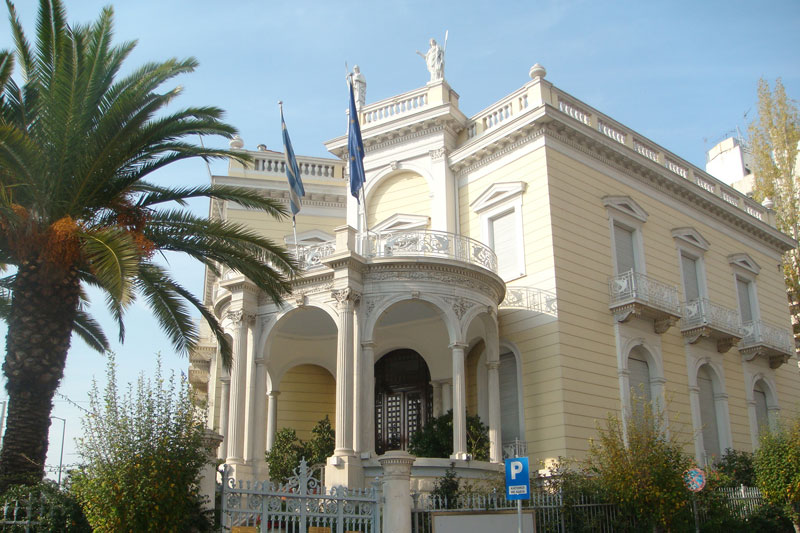
The well-organised museum was founded with the purpose of housing the “Goulandris” private collection of Cycladic Art (1986). It is one of the leading museums in Athens. Exhibits: On the 1st floor you will find various relics of Cycladic civilisation, while on the 2nd floor are miniatures and other objects of the same period. On the 3rd floor are temporary exhibitions of the museum while on the 4th floor is the K. Politis collection of ancient Greek art. In 1992 a new wing was added to the Museum, at the Stathatos Mansion. In the new wing you can see the Academy of Athens collection of ancient Greek art. On the basement of the building at N. Douka you can buy replicas of museum exhibits.
Addresses:
Main Building (Permanent collections): 4 Neophytou Douka St.
Stathatos Mansion (Temporary exhibitions): Vassilissis Sophias Ave and 1 Irodotou St.
BYZANTINE THE HISTORICAL MUSEUM OF ATHENS (Old Parliament)
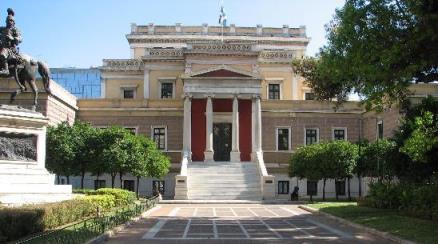
The museum use to be the old Parliament of Greece during the rein of King Otto, the first king of Greece after the war of independence (many Greeks refer to it as Palea Vouli (old parliament). The building became the National historical museum of modern Greece in 1962. A great segment of the collection, gathered since the founding of the Historical and Ethnological Society of Greece (1882), is part of the permanent exhibition of the museum, presented in the rooms encircling the congress hall. Among its exhibits are items from the modern Greek history from the revolution of 1821 until the second world war. Portraits of the Greek leaders of the revolution, the dresses of King Otto and Amalia and many other items from the modern history of Greece. Outside of the museum is the bronze statue of Theodoros Kolokotronis the great general of the Greek revolution in 1821.
Address: 13 Stadiou St. (close to Syntagma square)
THE NATIONAL GALLERY - ALEXANDROS SOUTZOS MUSEUM
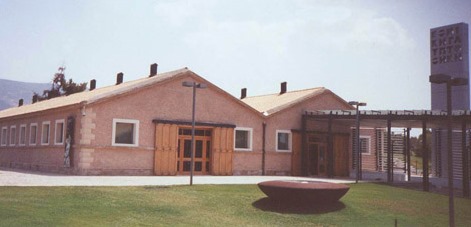
The most important institution in Greece devoted to the subject of the history of Greek and Western European art. In 2000, the National Gallery-Alexandros Soutzos Museum celebrated its 100th anniversary. At this time, the National Gallery Main Building remains closed due to the expansion works. You may visit the National Gallery and Alex. Soutzos Museum – National Glyptotheque.
Address: Army Park, Goudi (entrance from Katechaki Avenue) – Metro Station: Katechaki
THE MUSEUM OF GREEK TRADITIONAL INSTRUMENTS
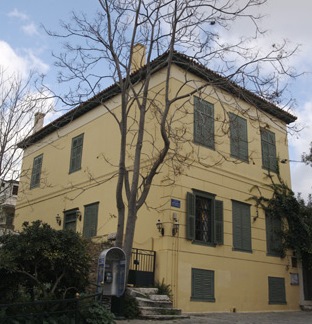
The museum has a great collection of all kinds of traditional Greek instruments from many areas of Greece.
Here you can see the Greek equivalent of the Scottish pipe the Tsampouna or Askos as it was called in the antiquity, the Greek taburas, flute (flogera), bouzouki, clarinets, santouri and all kind of instruments that are used in the Greek traditional music.
Address: 1 Diogenous St., Plaka
THE NATIONAL MUSEUM OF CONTEMPORARY ART
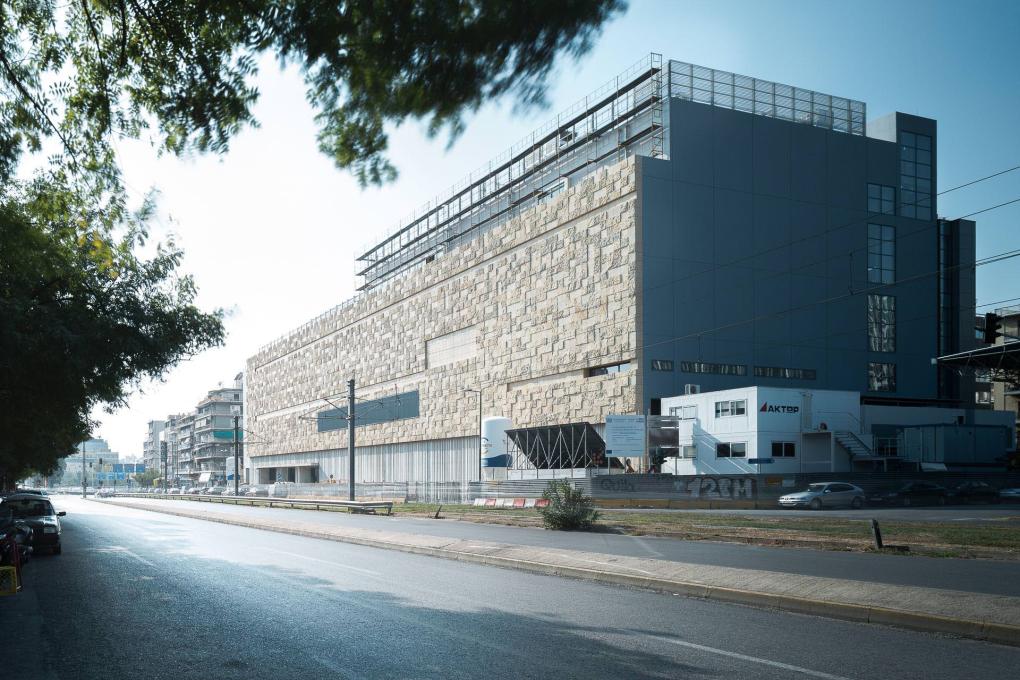
The National Museum of Contemporary Art began its operation in 2000. Its foundation came to cover a huge gap that the decades long absence of an analogous institution for contemporary international art had created in Athens.
The National Museum of Contemporary is housed to its temporary home at the Athens Conservatory where it will remain until the completion of the reconstruction of its own premises.
The National Museum of Contemporary is housed to its temporary home at the Athens Conservatory where it will remain until the completion of the reconstruction of its own premises.
Address: Athens Conservatory Building: Vassileos Georgiou Β 17 -19 & Rigillis Street
WAR MUSEUM OF ATHENS
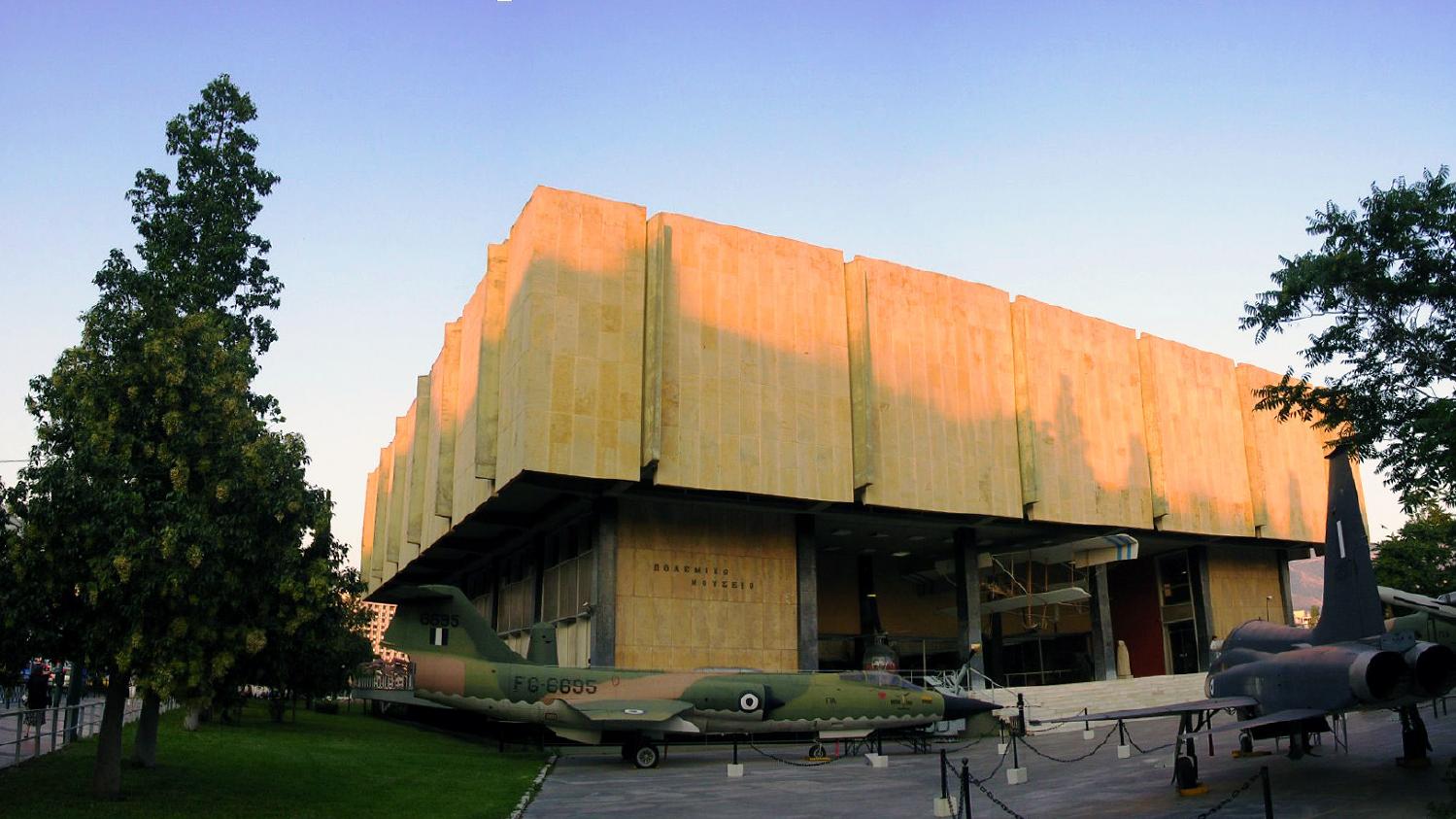
The museum was inaugurated in 1975. Its aim and mission is the exhibition of war mementos, the documentation and study of war history as well as the presentation of the struggles for freedom of the Greek nation from ancient times to the present day. The permanent exhibition are of the Museum is devoted to antiquity and covers the Stone Age and the Early Bronze Age, with an emphasis on the Mycenean era, themes from the prehistory of Greece are presented through groups of photographs and drawings, the Byzantine period, the period of Frankish rule, the Greek War of Independence, the 1912-1913 Balkan Wars and the First World War, and the historic period of the Greco-Italian War of 1941.
Address: The Museum is located near Syntagma Square (Metro Station: Evangelismos)




